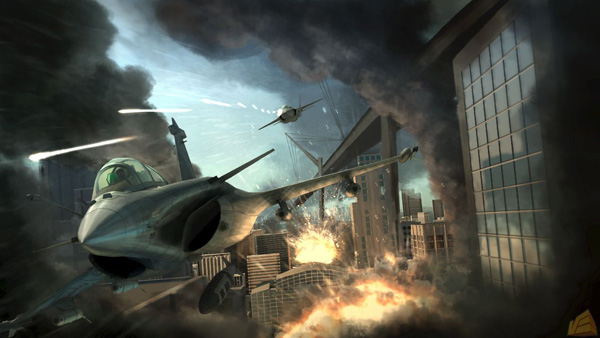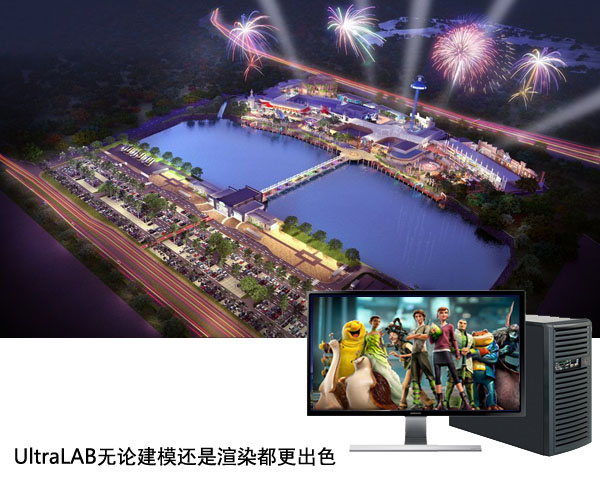In today's era, the development and changes are great. The functions of 3D animation design and modeling, special effects, video animation post-editing, special effects synthesis, and color grading software are constantly being upgraded. Manufacturers are frequently merged, and industry application requirements are getting higher and higher. With development and improvement, no one can guarantee whether they will have their own position in the future, not only software manufacturers, but also hardware manufacturers. The computing technology is constantly updated, and the once brilliant workstation manufacturers (IBM, SGI, SUN, etc.) are gradually withdrawing from the historical stage. , but also brings new opportunities. Professional workstation manufacturers must fully understand the application and software in order to provide better machines, a larger market, and the possibility of survival.

This article will analyze the most mainstream software for digital content creation at present. It cannot match the characteristics of the software, and the performance will be greatly reduced or even extremely low. Due to the urgency of professional knowledge and time, but in this era, time and efficiency need to be weighed. Data access is inevitably limited. In film and television creation, architecture, garden design, basic engineering and other industries, animation design software is rich in variety and powerful, which drives digital content creation, but 3D models are becoming larger and more complex, posing challenges to the performance of workstation hardware. To ensure that the 3D modeling interactive design process, real-time rendering should be smooth, and the final rendering should be completed in the shortest time.
Application software associated with this article:
3DS MAX (architecture industry, game industry)
MAYA (film and animation industry)
Cinema4D (column packaging)
Unity3D (game)
Rhino (architecture, industry)
SketchUP (sketch master)
Rehino (3D modeling design)
Lumion (3D architectural visualization)
Renderer class:
CPU class: MentalRay, RenderMan, V-RAY Render, MaxwellRender Mental
GPU class: FurryBallRT, Octane, MoskitoRender, Indigo Render,

(1) Characteristics of 3D design/modeling calculation
This stage is the design, creation, editing of 3D models, man-machine interaction, polygonal modeling, Nurbus modeling, etc. The model generation relies entirely on CPU single-core computing, and this process is multi-core No effect, you can't hold 10 mice or brushes (similar to 10 cores) to draw synchronously, you can only use one mouse or one pen, so the graphics drawing is a single-core computing mode, and the graphics card only needs texture and instant preview. The visual movement is smooth. It is actually a mouse movement process. The computer needs to generate at least 24 pictures in 1 second. However, with the deepening of the application, the computational complexity of the complex 3D model becomes larger and larger, and the computer has already It is impossible to complete 24 frames in 1 second, so the user feels that the computer performance is not enough. Therefore, when it comes to creating a large model, it is stuck, and creating a small model is very smooth. The only solution is to increase the CPU frequency to improve performance. The modeling stage is very important, because the amount of data of the perfect and spectacular 3D model is huge, and the engineers who program the 3D modeling software will not think that today, in order to pursue perfect and wonderful design effects, the software design application runs too fast, and the hardware is in a certain link. Can't keep up.
The most common problem: once the model is complex, the computer becomes very stuck, and the model cannot move. The main reason is that a large amount of vertex data is completed by a single core, and the low frequency cannot satisfy the calculation of complex model data.
(2) Real-time rendering (real-time preview) calculation characteristics
This stage is mainly to generate the 3D model through real-time graphics, display the real model on the screen, see the actual design effect, use Shade to display simple lighting effects, shadow effects and surface texture effects, and of course, high-quality shading effects It needs professional 3D graphics display card to support, it can accelerate and optimize the display of 3D graphics. However, no matter how it is optimized, it cannot turn the displayed 3D graphics into high-quality images. This is because Shade uses a real-time display technology, and the speed of the hardware limits it. It cannot feed back the reflections and refractions in the scene in real time. Such as ray tracing effects, the Shade window provides a very intuitive and real-time surface basic shading effect. According to the capabilities of the hardware, it can also display texture maps, light source effects and even shadow effects. The preview is for better modeling. Hardware requirements, frequency and graphics card.
Common problems: When displaying on the screen, the complex computer generation of the model cannot be achieved in real time. It needs a graphics card with a single-core high frequency and enough graphics memory and powerful graphics processing power.
(3) Final rendering (renderer) calculation characteristics
This stage is the process of generating images from 3D models through software calculations. A 3D model is a description of a 3D object or virtual scene that is strictly defined by language or data structure, including information such as geometry, viewpoint, texture, lighting, and shadow. The image is a digital image or a bitmap image, which is calculated based on a complete set of programs (rendering engine). The impact of hardware on it is only a matter of speed, and will not change the result of rendering. What affects the result depends on what it is based on. For procedural rendering, such as light and shadow tracing or radiosity, the CPU calculates the parameters set in the model according to the calculation method set by the rendering software, including: viewing the model from a certain angle, lighting, distance, blanking/occlusion , Alpha, filtering, and even texture paste what should it look like, so that the digital model can be transformed into a real visual graphics, and then the graphics card will display this picture.
The created 3D model is calculated by the renderer to form an image file or a graphics file. The main calculation methods are:
1) Traditional rendering is mainly completed by multi-core CPU,
2) Multi-point rendering is completed with the powerful floating-point computing capability of GPU calculate
In short, the design software mainly completes: modeling, material mapping and real-time preview (real-time rendering), final rendering, and the most important thing to reflect computer performance is modeling and rendering.